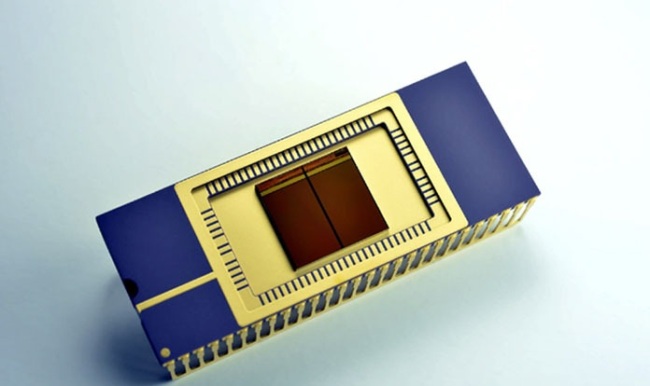[THE INVESTOR] The world’s memory sector is sizzling as more global chipmakers are vying to take the upper hand in the development of a more advanced vertical, or 3-D NAND flash memory chip.
First mass-produced by Samsung Electronics in 2013, the 3-D NAND memory, which stacks cells vertically inside for the sake of space efficiency, has gone through a technical makeover in the past three years.

The first generation chip has 24 layers of cells while the second- and third-generation chips feature 32 and 48 layers of cells stacked inside, respectively.
Samsung’s 3-D NAND chip with 48 layers of cells is anticipated to be fitted in California-based Apple’s next iPhone, likely to be unveiled in September.
The number of the cell layers is expected to increase to 64 by the end of this year as global chip companies, including Samsung Electronics and Toshiba, vie to start the mass production of the fourth-generation 64-layer memory chip this year.
The memory chip layer is forecast to increase by 16 each year to reach 128 layers in 2020, according a recent market report by NH Investment & Securities.
Samsung, which is said to have achieved a high production-yield rate at around 70 to 80 percent in rolling out the 64-layer chip, reportedly plans to supply the fourth-generation chip to its customers from December this year.
The Korean chipmaker, the firstcomer in the 3-D NAND chip segment, has been enjoying a leading position with its global market share reaching 35.1 percent as of the first quarter of 2016, according to market research firm DRAMeXchange.
Toshiba of Japan and SanDisk of the US came second and third with 21.6 percent and 15.1 percent, respectively.
The Japanese firm has recently ratcheted up its efforts to increase its foothold in the 3-D NAND memory chip segment.
Joining hands with US hard-disk maker Western Digital, the Japanese firm has recently pledged to invest around 1.5 trillion yen (US$14.6 billion) in beefing up the manufacturing facilities for 3-D NAND memory.
As a result of the joint project, Western Digital announced that it finished the development of its own 64-layer chip recently and will start the mass production of the chip early next year.
“The launch of the next-generation 3-D NAND technology based on our industry-leading 64 layer architecture reinforces our leadership in NAND flash technology,” said Siva Sivaram, an executive vice president of Western Digital, in a press release.
Other chip firms including Intel and Micron could emerge as a threat to Samsung and Toshiba.
“Intel and Micron, which have formed a partnership, have an upper hand in technology and production compared to their competitors,” said Hwang Min-sung, an analyst from Samsung Securities, anticipating the two can outpace Samsung if they achieve the mass production of the 64-layer chip this year.
Emerging Chinese semiconductor companies will likely pose an immense challenge against the conventional chip powerhouses.
Tsinghua Unigroup, a state-controlled Chinese conglomerate, took over XMC, a Chinese government-run chipmaker in line with the Chinese government’s goal to upgrade its manufacturing sector with high-tech businesses.
The combined business entity, called Changjiang Storage, is expected to put weight on catching up with the front-runners in the memory chip sector.
By Kim Young-won (wone0102@heraldcorp.com)








![[Graphic News] More Koreans say they plan long-distance trips this year](http://res.heraldm.com/phpwas/restmb_idxmake.php?idx=644&simg=/content/image/2024/04/17/20240417050828_0.gif&u=)
![[KH Explains] Hyundai's full hybrid edge to pay off amid slow transition to pure EVs](http://res.heraldm.com/phpwas/restmb_idxmake.php?idx=644&simg=/content/image/2024/04/18/20240418050645_0.jpg&u=20240419100350)





![[From the Scene] Monks, Buddhists hail return of remains of Buddhas](http://res.heraldm.com/phpwas/restmb_idxmake.php?idx=652&simg=/content/image/2024/04/19/20240419050617_0.jpg&u=20240419175937)

![[KH Explains] Hyundai's full hybrid edge to pay off amid slow transition to pure EVs](http://res.heraldm.com/phpwas/restmb_idxmake.php?idx=652&simg=/content/image/2024/04/18/20240418050645_0.jpg&u=20240419100350)

![[Today’s K-pop] Illit drops debut single remix](http://res.heraldm.com/phpwas/restmb_idxmake.php?idx=642&simg=/content/image/2024/04/19/20240419050612_0.jpg&u=)